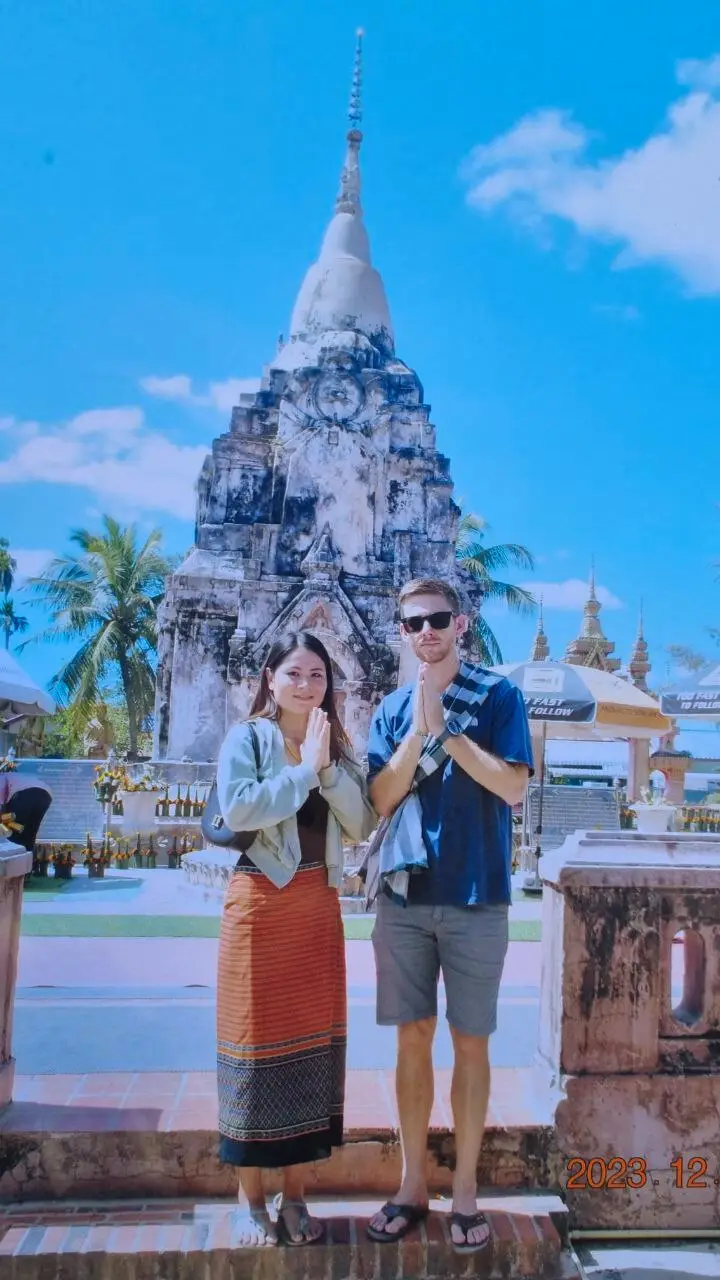
Disclosure: This article contains affiliate links. If you make a purchase through them, we may earn a small commission and you support our blog to write more helpful articles – at no extra cost to you.

If people talking about one of the popular Loops in Laos, you might have heard of the Thakek Loop or the Bolaven Plateau Loop. But the Xe Champhone Loop is still quite unknown among travelers in Laos. The Loop itself is located in the Central Region of Laos in a Province called Savannakhet, which is actually the largest province in Laos.
The Province itself is probably one of the most underrated areas in the country. Many travelers just passing through from North to South (or vice versa) or doing a visa run / border bounce from Thailand. What most people don’t know, is that Savannakhet Province actually has plenty of things to offer. But it is just not as advertised as other parts of Laos for Tourism. Therefore Savannakhet sees much less foreign tourists flocking into the city of province. Not only in the city of Savannakhet you will find several things to do that keep you busy for a few days, but there is also a Loop in the outskirts of Champhone District – the Xe Champhone Loop, which can either be done by motorbike, bicycle or private driver.
The city of Savannakhet, which is actually called “Savan” or “Mueang Kaisone Phomvihane” by locals is a charming town on the Mekong River bordering Mukdahan, Thailand. Savannakhet is the starting point of the Loop. The second Thai-Lao friendship bridge connects the two countries, so it’s easy for tourists to visit as there is both eVisa and Visa on Arrival accepted on the Lao side of the border. Savannakhet Province is quite flat, with the exception of some plateaus and national parks south and east of the province.
For those travelers who come across this colonial-style city, they might wanna know some things to do in Savannakhet, which I listed on a separate Savannakhet City Guide. In this guide you can also find detailed information about how to get to Savannakhet. There are many options to travel to and from Savannakhet because of it’s convenient location bordering Thailand to the west and Vietnam to the east. The city is easy to reach from Southern Pakse, Central Thakek, the Capital of Vientiane and even has a small Airport.
Champhone District in Savannakhet is a region rich in biodiversity, cultural heritage and agriculture. It is home to the Xe Champhone Wetlands, a designated Ramsar site, which supports rare wildlife such as the Siamese crocodile, softshell turtles, and diverse bird species. The district’s economy relies heavily on rice farming, fishing and livestock, benefiting from the fertile floodplains of the Xe Champhone River.
The area is also inhabited by various ethnic groups, including the Phu Thai, who maintain traditional practices such as weaving and spiritual ceremonies. The Phu Thai group make up about 60-70% of the population in the whole province and are also present in parts of Thailand (Nakhon Phanom, Mukdahan, Sakhon Nakhon). With its mix of wetlands, wildlife and vibrant ethnic culture, Champhone is a fascinating stop along the Xe Champhone Loop, offering visitors a glimpse into Laos’ natural and cultural diversity. Doing the Loop takes you back in time and you will get authentic insights into Lao culture.
Because of the man-made reservoir in Champhone district, inhabitants living close to it, can grow rice twice per year instead of only one time. The wetlands are perfect for rice cultivation. Therefore it is likely that even in dry season you will see lots of green areas and rice fields almost all year round.
The Xe Champhone Loop can easily be done in 1 day if you start in the morning or if you prefer to do it at a slower pace and get more cultural insights, there are also some Homestays on the Loop. History Lovers will love the sights on the Loop. You will hardly encounter any other tourists during the Loop, which will make you feel, that you finally found the untouched Laos – which is definitely true. Plenty of stops on the way, such as Pidok Library, Taleo old temple, Monkey Forest, Turtle Lake, Soui Lake, Wat Phoukor or That Khou.
Phoukor Temple is not only known for its reclining Buddha statue but also for its Buddhist Hell (Naraka) sculptures, which show the consequences of sin according to Theravada Buddhist beliefs. The temple features dramatic and sometimes terrifying statues of tortured souls, symbolizing karmic retribution for wrongdoings in life. These sculptures serve as a visual lesson, reminding visitors about the importance of leading an ethical life to avoid suffering in the afterlife. The contrast between the serene reclining Buddha and the haunting imagery of Naraka makes Wat Phoukor a unique and thought-provoking site for those exploring the spiritual and cultural landscape of the Xe Champhone Loop.
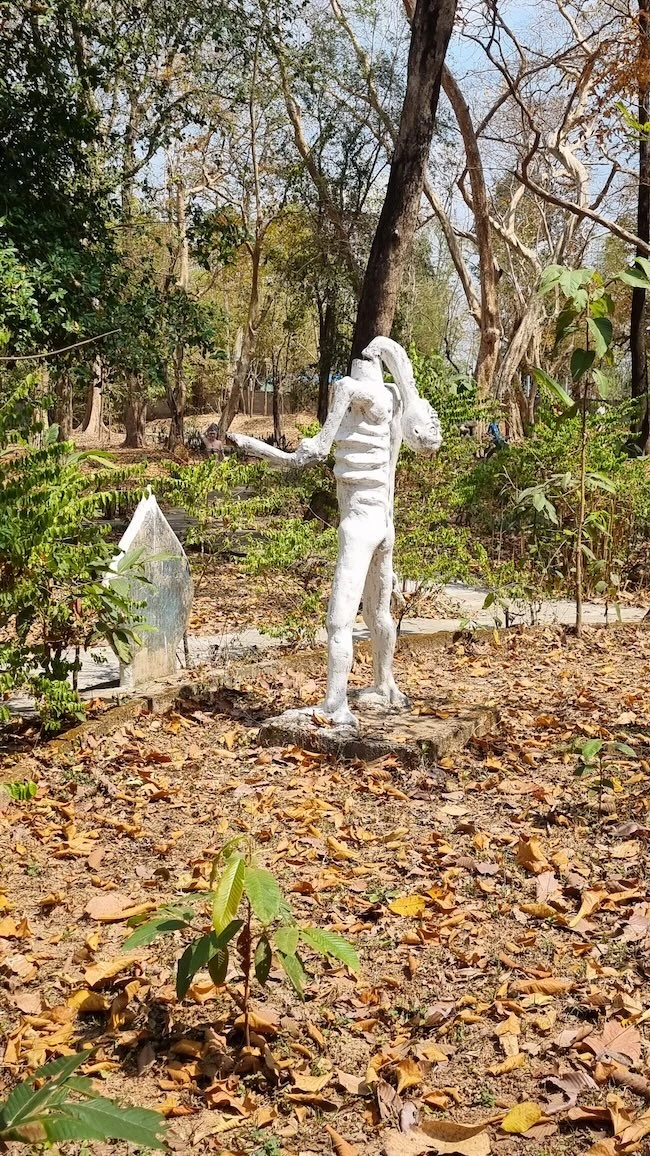

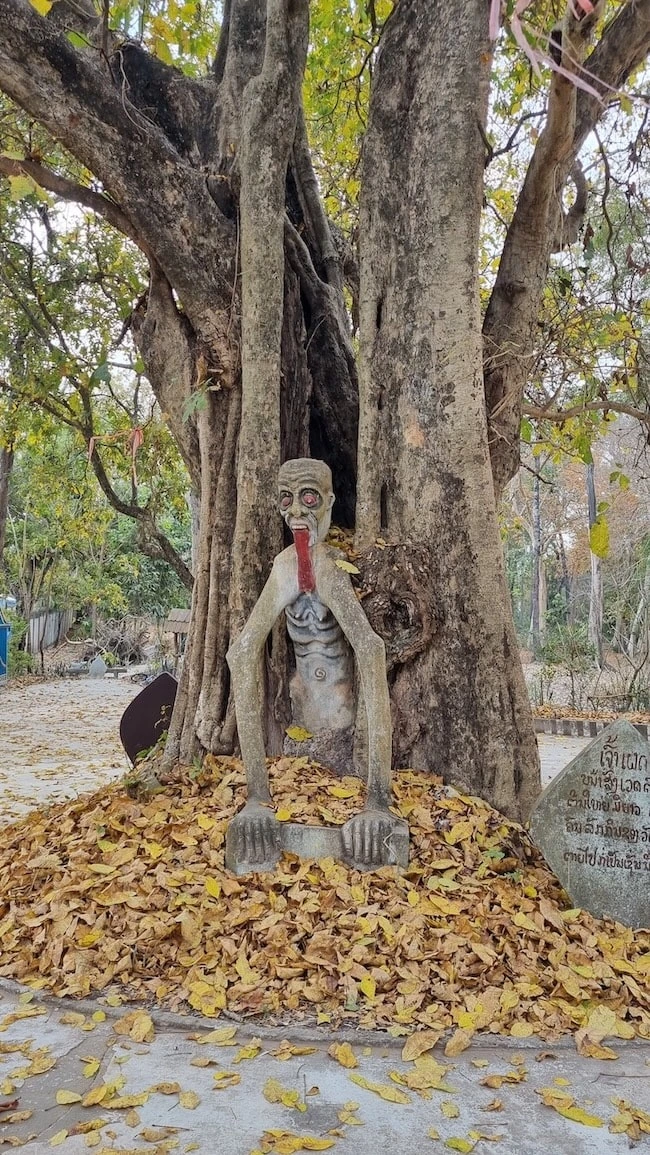
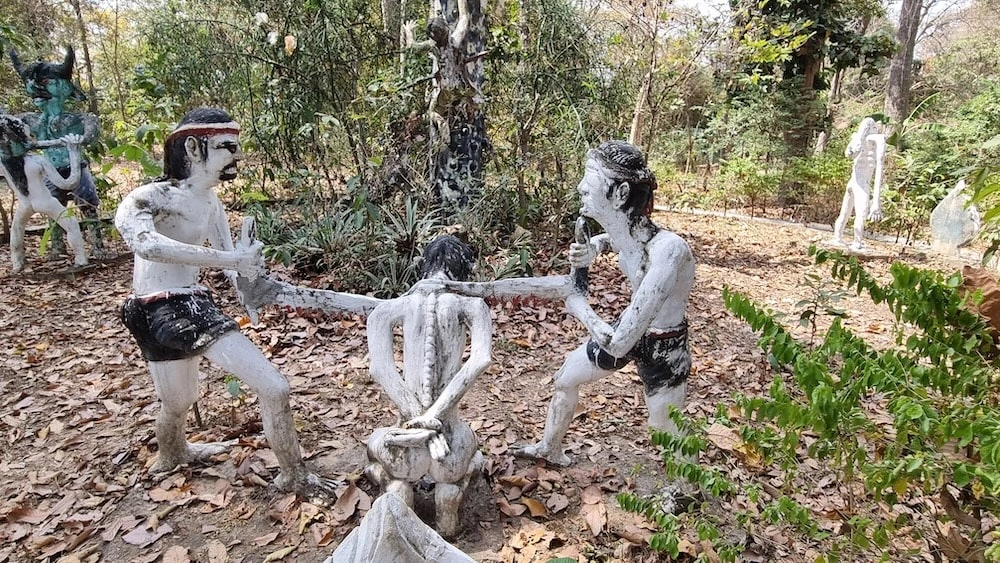
Wat Taleo Kao or Taleo Old Temple, is a historic Buddhist temple located about 60 kilometers southeast of Savannakhet right on the Xe Champhone Loop. It was built in the early 19th Century and back then was an important religious and cultural site for local communities. During the Vietnam War, the temple was heavily bombed by U.S. F105 forces during the so called secret war as it was near the Ho Chi Minh Trail, a key supply route used by North Vietnamese troops. In 1969 many bombs were dropped on the temple over a period of two weeks. There were only 12 houses out of 200 left after the bombings of the village. After the rampage of the Americans, villagers had to move on to another village. Despite the damage, it remains a place of worship and local efforts have helped preserve its spiritual and historical significance. The temple site and surroundings are beautiful and it will feel like a time-machine.
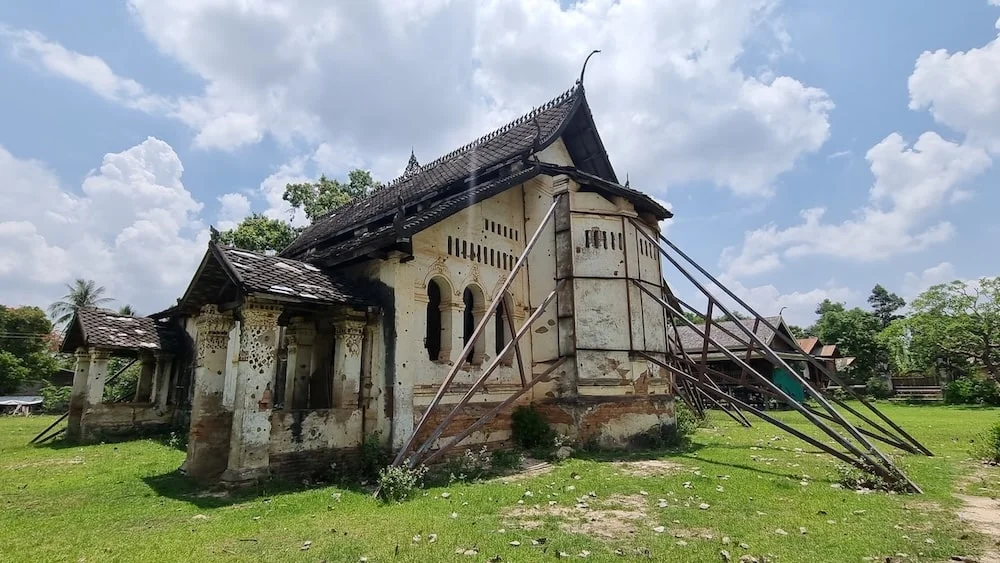
The Hotay Pidok Library in Ban Nong Lam Chan, Champhone District is one of the oldest Buddhist script libraries in Laos, believed to be several hundred years old. It houses ancient palm-leaf manuscripts written in Pali, Lao, and Khmer scripts, covering Buddhist teachings, history and traditional medicine. The library is especially important because it preserves rare Buddhist texts that have survived wars, natural disasters and time. The manuscripts are stored in a traditional wooden stilt structure, designed to protect them from moisture and pests. As one of the most significant Buddhist archives in Laos, Hotay Pidok remains an important center for monks, scholars and devotees seeking to study and protect the region’s religious and cultural heritage. Travelers on the Loop can visit this important library. It is located near a temple, so quite easy to find. Once you reach the library, take off your shoes and usually there is a local guy inside showing you the old manuscripts – super interesting
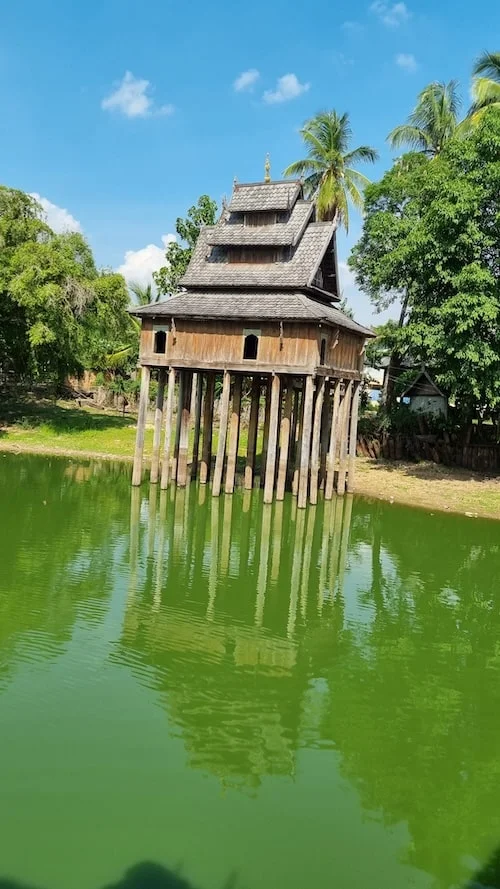
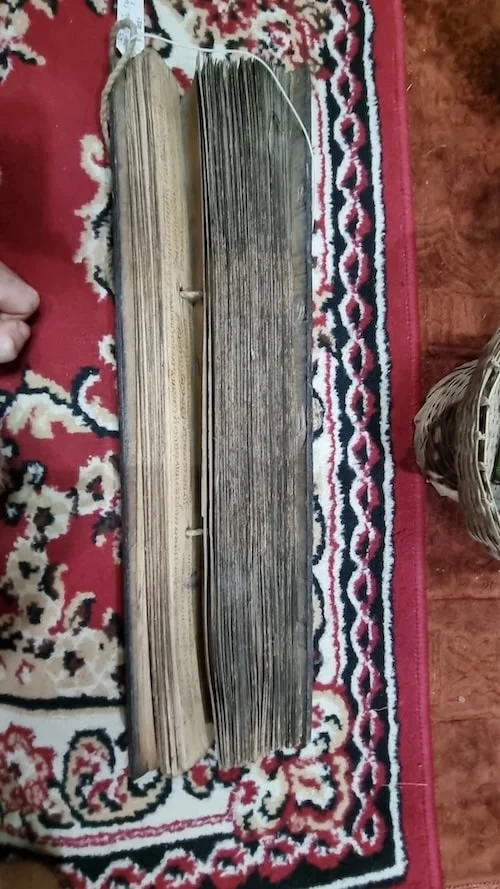
Turtle Lake (Nong Kham) along the Xe Champhone Loop is a sacred site known for its population of rare softshell turtles. These turtles, believed to be spiritually significant, are protected by local villagers who see them as sacred animals linked to Buddhist and animist beliefs. It is common in lao cuisine to eat almost everything that moves, but these turtles are protected and villagers will not touch them because of their spiritual importance. The Laotian softshell turtle (Amyda ornata), found in this area, is a threatened species due to habitat loss and poaching. Visitors can see the turtles surfacing in the lake, often being fed by monks and locals as part of religious offerings. The peaceful setting and cultural importance of Turtle Lake make it a unique stop on the Xe Champhone Loop, showing efforts of conservation from the local government.
Other fascinating stops along the Xe Champhone Loop include That Kou, an ancient, weathered stupa surrounded by local legends and spiritual significance. Nearby, Soui Lake offers a peaceful setting where visitors can relax and witness traditional fishing methods still practiced by locals. There are also several restaurants to try local fish at Soui Lake. The Monkey Forest in Ban Dong Muang is home to a large troop of long-tailed macaques, which are considered sacred and roam freely around the village temple.
The region is also one of the last natural habitats of the critically endangered Siamese crocodile, which can be found in the Xe Champhone Wetlands
Lastly, the Phu Thai villages in the area provide a glimpse into the rich cultural heritage of the Phu Thai ethnic group, known for their vibrant weaving traditions, spiritual rituals and warm hospitality. Visitors can take part in Phu Thai weaving and indigo dyeing workshops, where skilled artisans teach traditional techniques passed down through generations. These workshops offer a hands-on experience in natural dyeing, spinning, and weaving intricate patterns, allowing guests to create their own unique textiles while learning about the deep cultural significance of Phu Thai craftsmanship.
Google Maps Locations Xe Champhone Loop. Source: Facebook/XeChamphoneLoop
Basically the Xe Champhone Loop can be done all year around. But keep in mind that there are different seasons in Laos. If you decide to do the Loop on a motorbike or bicycle it’s probably better to do it in dry season, which is from October to April/May. The winter months October to February are usually a great option because it is not that hot and at night it can even be chilly, so take a pullover and long pants. The weather can be very hot in April and May, just be before raining season hits around June (40+ degrees). Raining season not always exactly starts at the same time, but it usually starts to rain more end of May or June. Thats where most of the rice farmers start to plant their rice. But in the wetlands of Champhone District, it is likely to see green rice fields also during dry season. Raining season itself lasts until September. Even though it doesnt rain all day during the green season, but conditions will be wet and muddy on some parts.
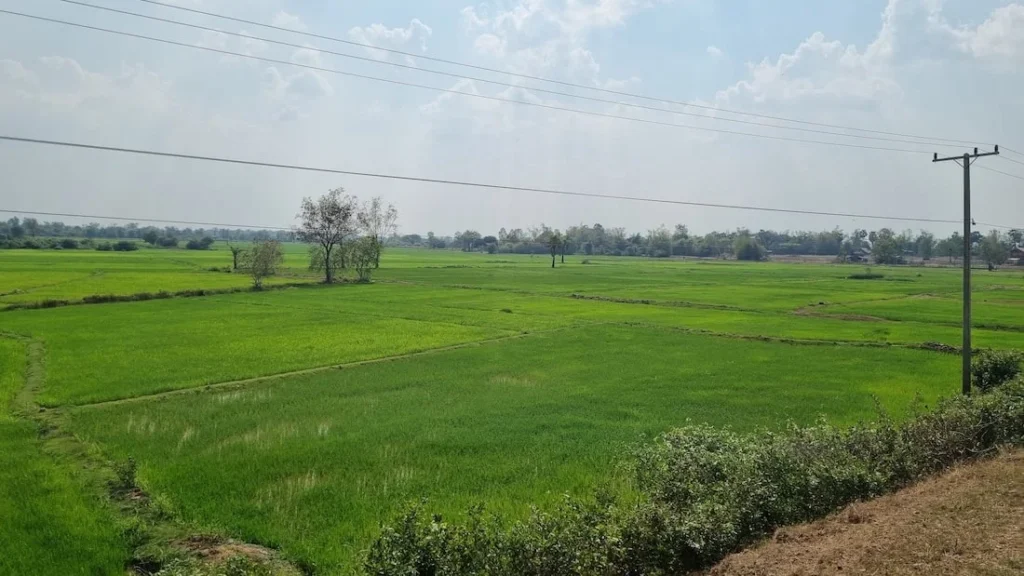
As mentioned earlier, the Loop can be done by motorbike, bicycle or car and private driver. In Savannakhet you can find only a few motorcycle rentals. I would recommend to go to Dolly’s Cafe to rent a semi-automatic bike. The British owner and his Lao wife are reliable and honest, so easily grab your bike from there.
Sometimes I see some foreigners exploring the region on a bicycle as well. As the traffic is not bad at all, it’s a great way to see the Xe Champhone Highlights on 2 unmotorized wheels. Rental bikes are available at Marvelaos in the center of Savannakhet.
In case you need a private driver with a pickup-truck, feel free to reach out to us via Contact Form and we can arrange it for you.
The Xe Champhone Loop in Savannakhet Province is an underrated yet fascinating route that takes travelers through a mix of cultural heritage, stunning wetlands and unique wildlife. The loop features ancient temples like Wat Phoukor and Taleo Old Temple, the sacred Turtle Lake, and the Hotay Pidok Library, which houses centuries-old Buddhist scriptures. The Xe Champhone Wetlands, a Ramsar site, is home to rare species like the Siamese crocodile and softshell turtles, highlighting the region’s biodiversity and conservation efforts. Visitors can also experience authentic Phu Thai culture, including weaving and indigo-dyeing workshops, while exploring traditional villages. Whether by motorbike, bicycle, or private car, the Xe Champhone Loop offers a rare chance to see untouched Laos, away from the usual tourist trails.